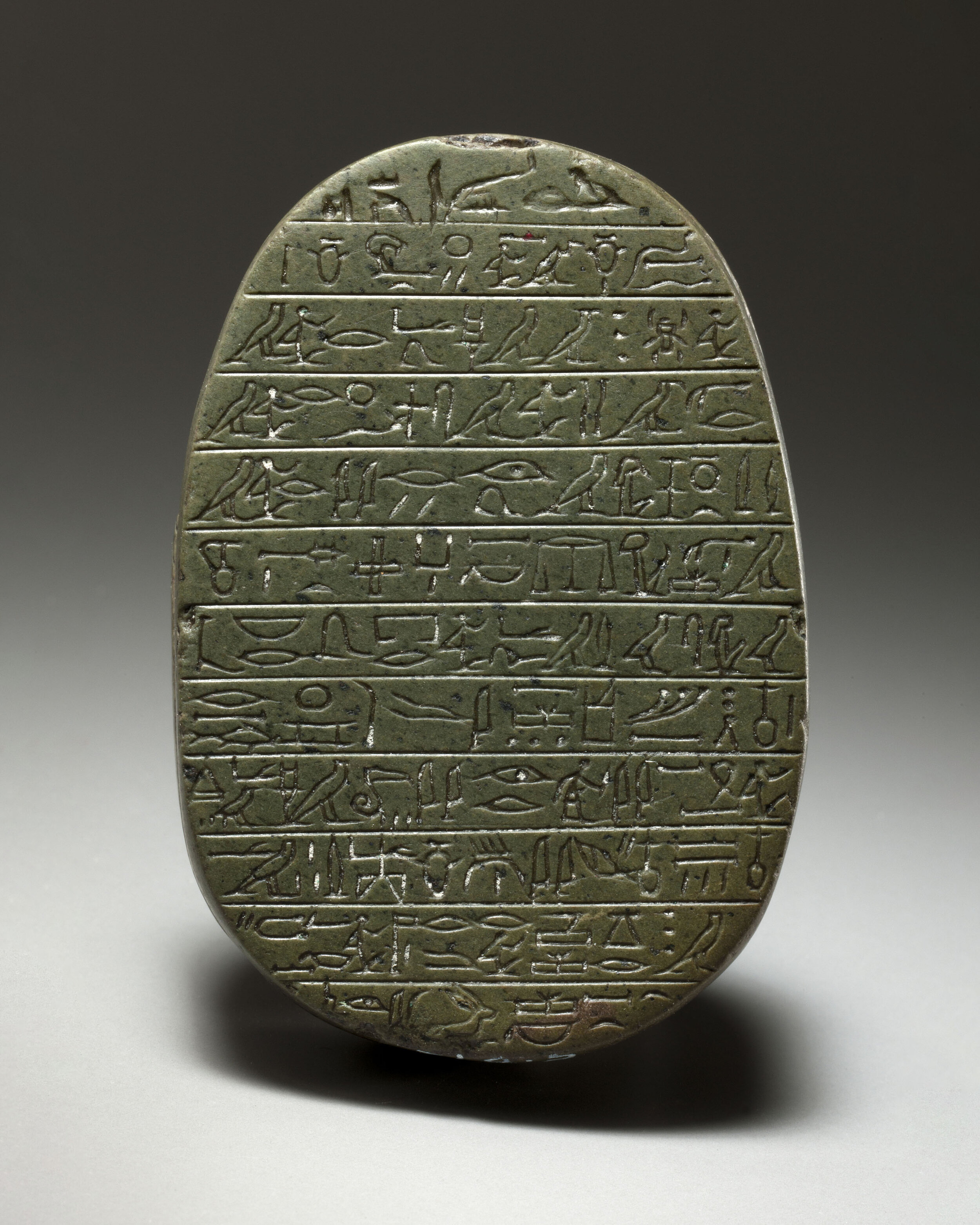Ancient Egyptian Stone Heart Scarab


Ancient Egyptian Stone Heart Scarab
Egyptian, late New Kingdom (Ramesside period, 13th-12th century B.C.)
Greenish Stone
Length: 6.5 cm
Serial: 22902
Virtually intact scarab, small chips on the edge; gold leaf decoration now lost.
A shape representing the insect in a simplified, but complete fashion, with arched back, linear striated legs in relief, stylized head and finely incised elytra. A flat, oval base, with the classic version of chapter 30b of the Book of the Dead incised in twelve regular lines.
The identity of the deceased is indicated on line 1, with a tight, irregular engraving, suggesting that these objects were mass-produced and personalized at the time of sale, when the sculptor would complete them with the name specified by the acquirer. The name of the owner raises some problems and is not clearly identified: Nes-Imen-Ipet (belonging to Amun of Luxor) or Nes-Ipet-Imen (belonging to the Harms of Amon).
The text reads: “The Osiris Nes-Imen-Ipet, justified, he said: heart of my mother, twice, my heart which appears, do not rebel against me, in front of the pillars, do not reject me in the court, do not be hostile to the keepers of the balance, you are my Ka which is in my belly, Khnum who makes my limbs plenty, you go out to a beautiful place, do not slander my name, among the judges who put men in their place. It will be good for us, good, listen to the generous trial, do not lie against me next to the god, avoid it at any time (?).”
This piece has close parallels dated to the New Kingdom, rather late in the period. As is often the case, the inscription shows some particular variants from the Book of the Dead, among which the most significant is the determinative of the pyramid, reminiscent of the “pyramidons” of Deir el-Medina (see line 9): this would confirm the dating and might even indicate the location of the place of production.
Larger than the usual undecorated amulets-pendants of the same shape, heart scarabs were an essential element of the funerary furniture of Egyptian notables: suspended from the neck or inserted between the strips of the mummy, they would replace the real heart of the deceased, which found its final resting place in one of the four canopic jars. These objects, which can be considered as amulets, were carved from a dark stone (greenish gray, black), generally serpentine, graywacke, steatite, etc. The best quality examples, like our piece, would be decorated with gold leaf strips highlighting the edges and the elytra.
A seat of reason and of personal responsibility, the heart had to testify on the life of the deceased in front of the court of Maat and to allow him/her, if the evidence was favorable, to enter the afterlife: these beliefs explain the presence of the invocation inscribed under the base.
Provenance
Ex-R. Liechti (1934-2010) collection, Geneva, Switzerland, collected between the 1950s and the 1990s, acquired on the French art market (Louvre des Antiquaires)
Bibliography
ANDREWS C., Amulets of Ancient Egypt, London, 1994, pp. 50 ff
Das Ägyptische Museum Berlin, Mainz/Rhine, 1991, pp. 252-253, no. 155
PAGE-GASSER M. and WIESE A.B., Egypte, Moments d’éternité: Art égyptien dans les collections privées suisses, Mainz/Rhine, 1997, pp. 189-191, no. 122
On the name of the deceased and the variants from the text of the Book of the Dead, see:
NAVILLE E., Das ägyptische Totenbuch, Berlin, 1886, Vol. I, pl. 43
RANKE H., Ägyptische Personennamen, Glückstadt, 1953, Vol. I, p. 173/20







